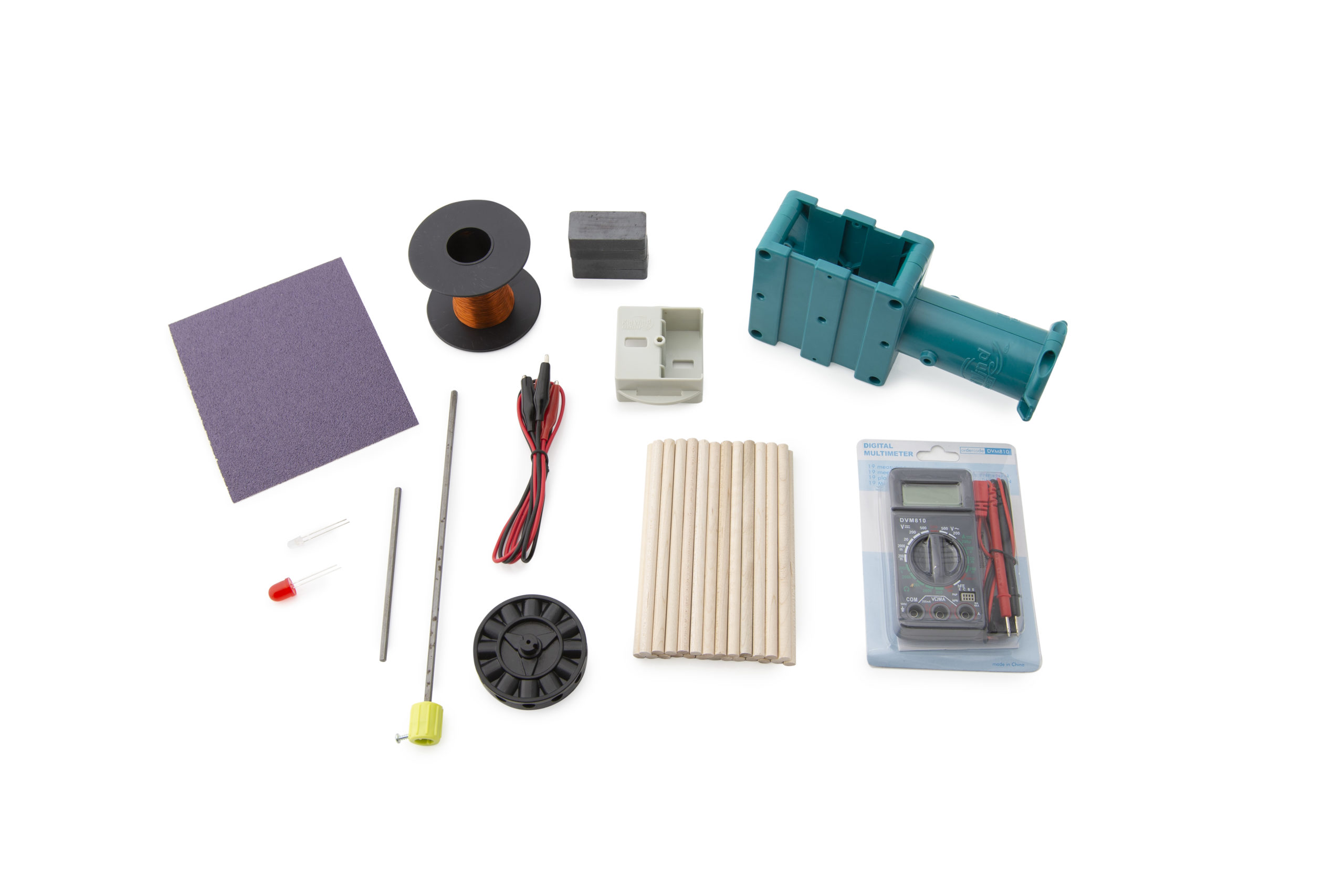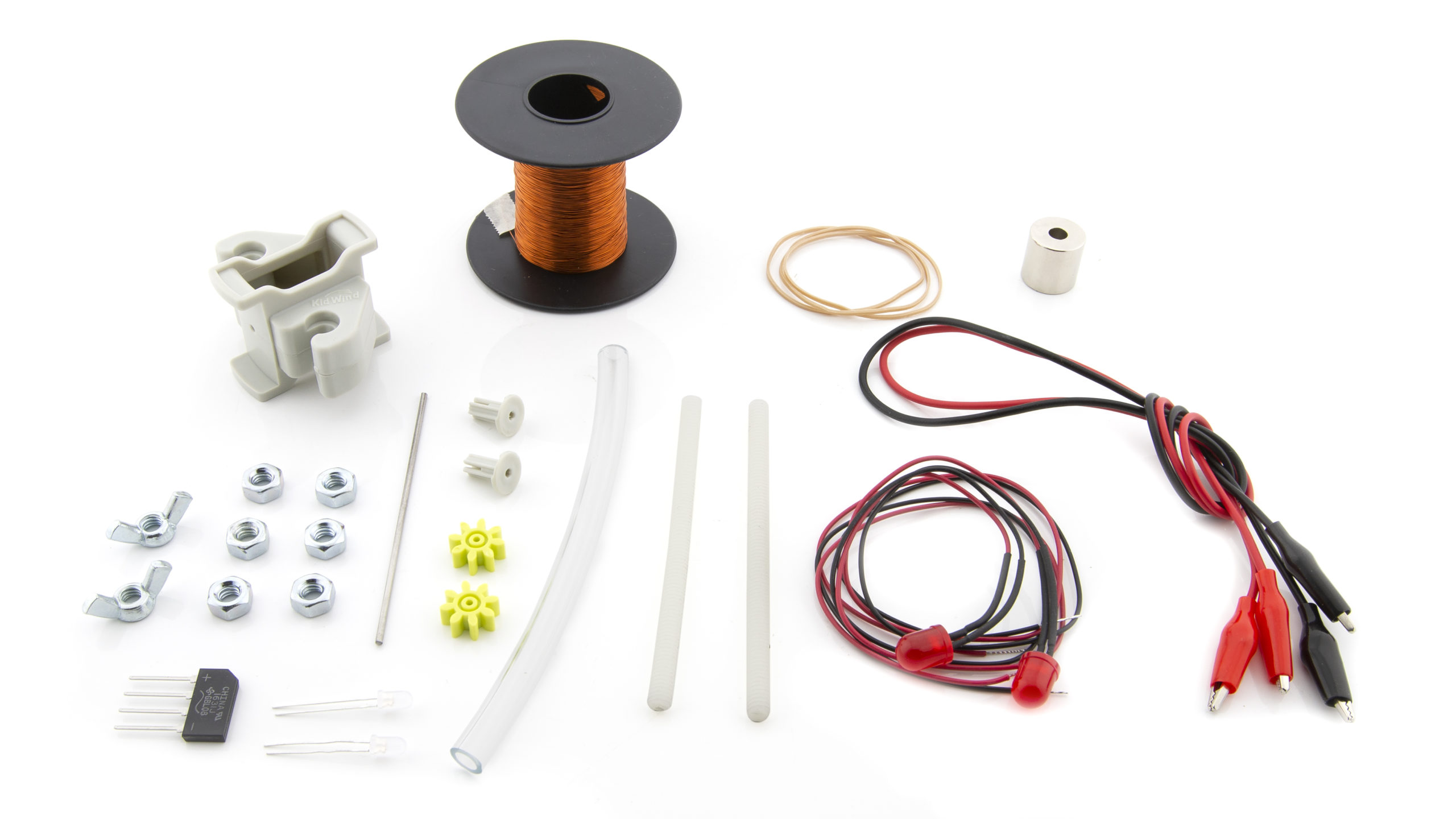There are two Do It Yourself generator options for KidWind wind turbines. They are suited for different activities. Both are designed for educational purposes and to designed to explore generator variables and some of the characteristics of AC electricity.
 |
The KidWind simpleGEN (KW-SGEN) takes the place of the nacelle on a tower from the KidWind Advanced Wind Experiment Kit or KidWind Basic Wind Experiment Kit, or it can be held in the hand. It is excellent for investigating factors that affect power output of a generator, and a variety fo energy sources can be used to turn the generator (wind turbine blades, water power, steam, etc.)The simpleGEN includes 4 rectangular ceramic magnets. Students can vary the number of turns of wire as well as the number of magnets, making simpleGEN a more versatile option for teaching how generators work.
Experiment 7 from Renewable Energy with Vernier (REV) uses the simpleGEN, as does investigation 25 from Physics Explorations and Projects (PEP). SimpleGEN is also available as a class pack, which includes materials to construct ten generators: KidWind simpleGEN (KW-SGENC). |
 |
The GENPack (KW-GP) works with the standard nacelle of a KidWind Advanced Wind Experiment Kit (KW-AWX) or KidWind Basic Wind Experiment Kit (KW-BWX). A strong cylindrical neodymium magnet is included. There are no Vernier-published experiments for the GENPack. Students who are participating in a KidWind Challenge event may wish to use the GENPack to improve their turbine’s power output. |
Both the SimpleGEN and the GENPack produce alternating current. A bridge rectifier can be used to convert alternating current to direct current. A bridge rectifier is included on the KidWind Power Output Board (KW-POBD). Students can also create their own bridge rectifier circuit using diodes, or bridge rectifier chips can be purchased from electronics supply companies.
